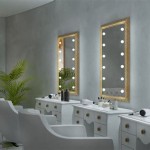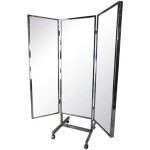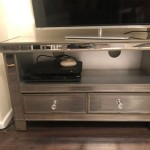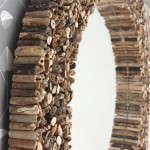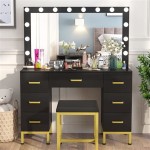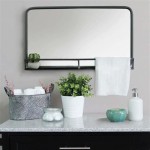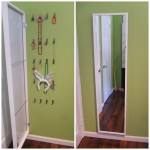Recessed Medicine Cabinet Mirror: A Comprehensive Guide
A recessed medicine cabinet mirror is a bathroom fixture that combines the functionality of a mirror with the storage capacity of a cabinet, all while being integrated into the wall for a streamlined and space-saving design. These cabinets are a popular choice for bathrooms of all sizes, offering both practical benefits and aesthetic appeal. This article will explore the various features, types, installation considerations, and advantages of recessed medicine cabinet mirrors.
The primary function of a recessed medicine cabinet mirror is to provide a reflective surface for personal grooming tasks such as shaving, applying makeup, and styling hair. Additionally, it offers concealed storage for toiletries, medications, and other bathroom essentials, reducing clutter and keeping the countertop clear. The recessed design further enhances space efficiency by minimizing the protrusion of the cabinet into the bathroom.
Key Features and Considerations
Several key features contribute to the functionality and appeal of a recessed medicine cabinet mirror. These include the size and dimensions of the cabinet, the type of mirror used, the interior storage configuration, the door mechanism, and the materials used in construction. Careful consideration of these features will ensure that the chosen cabinet meets the specific needs and preferences of the user.
The size of the cabinet is a critical factor. It should be proportionate to the size of the bathroom and offer sufficient storage space without overwhelming the wall. Dimensions typically range from small single-door cabinets to larger double- or triple-door units. The depth of the cabinet is also important, as it determines the amount of storage space available. A deeper cabinet can accommodate larger items, but it also requires more space within the wall cavity.
The type of mirror used affects both the aesthetics and the functionality of the cabinet. Standard mirrors provide a clear and accurate reflection, while beveled mirrors add a touch of elegance. Magnifying mirrors can be incorporated for detailed tasks, and some cabinets offer adjustable magnification levels. LED-lit mirrors are also becoming increasingly popular, providing bright and even illumination for grooming.
The interior storage configuration is a crucial aspect of the cabinet's functionality. Adjustable shelves offer flexibility in accommodating items of different sizes, while fixed shelves provide a more structured storage arrangement. Some cabinets also include specialized compartments for specific items, such as toothbrush holders or razor storage. The material of the shelves is also a consideration. Glass shelves are easy to clean and allow light to pass through, while wooden or metal shelves offer greater durability.
The door mechanism is another important feature to consider. Hinged doors are the most common type, offering easy access to the cabinet's contents. Sliding doors are a good option for smaller bathrooms, as they do not require extra space to swing open. Some cabinets also feature soft-close hinges, which prevent the door from slamming shut and reduce noise.
The materials used in the construction of the cabinet affect its durability, appearance, and resistance to moisture. Common materials include wood, metal, and plastic. Wood cabinets offer a classic and elegant look, but they require proper sealing to prevent water damage. Metal cabinets are durable and resistant to rust, making them a good option for humid environments. Plastic cabinets are lightweight and affordable, but they may not be as durable as wood or metal cabinets.
Types of Recessed Medicine Cabinet Mirrors
Recessed medicine cabinet mirrors are available in a variety of styles and configurations to suit different bathroom designs and needs. These include single-door, double-door, and triple-door cabinets, as well as cabinets with different frame styles, mirror shapes, and lighting options. Understanding the different types of cabinets available can help in selecting the best option for a specific bathroom.
Single-door cabinets are the most common type, offering a simple and functional design. They are suitable for smaller bathrooms or for use above a single sink. These cabinets typically feature a single mirror door that opens to reveal interior storage shelves. The size of the cabinet can vary, but they are generally smaller than multi-door cabinets.
Double-door cabinets provide more storage space and a wider viewing area compared to single-door cabinets. They are suitable for larger bathrooms or for use above a double sink. These cabinets feature two mirror doors that open to reveal a larger interior storage space. The doors can be hinged in the center or on the sides, depending on the design.
Triple-door cabinets offer the most storage space and the widest viewing area. They are ideal for master bathrooms or for households with multiple users. These cabinets feature three mirror doors that open to reveal a large interior storage space. The center door is typically fixed, while the side doors open to provide access to the storage compartments.
Frame styles can vary widely, from simple frameless designs to ornate framed designs. Frameless cabinets offer a clean and modern look, while framed cabinets add a touch of elegance and sophistication. The frame material can also vary, with options including wood, metal, and plastic.
Mirror shapes can also vary, with options including rectangular, square, oval, and round mirrors. Rectangular and square mirrors are the most common, offering a classic and versatile look. Oval and round mirrors can add a touch of softness and elegance to the bathroom.
Lighting options can further enhance the functionality and aesthetics of a recessed medicine cabinet mirror. LED-lit mirrors provide bright and even illumination for grooming tasks. The lighting can be integrated into the mirror itself or mounted above the cabinet. Some cabinets also feature dimmable lighting, allowing the user to adjust the brightness to their preference.
Installation Considerations for Recessed Medicine Cabinets
Proper installation is crucial for ensuring the functionality and longevity of a recessed medicine cabinet mirror. The installation process typically involves cutting an opening in the wall, framing the opening, inserting the cabinet, and securing it to the wall studs. Careful planning and attention to detail are essential for a successful installation.
Before beginning the installation process, it is important to determine the desired location of the cabinet. The cabinet should be positioned at a comfortable height for the user and should be centered above the sink or vanity. It is also important to ensure that there are no obstructions in the wall, such as pipes or electrical wiring.
The first step in the installation process is to cut an opening in the wall. The size of the opening should be slightly larger than the dimensions of the cabinet to allow for easy insertion. A drywall saw or a utility knife can be used to cut the opening. It is important to use caution when cutting into the wall to avoid damaging any hidden pipes or wiring.
Once the opening has been cut, the next step is to frame the opening. Framing provides structural support for the cabinet and ensures that it is securely mounted to the wall. The framing should be constructed of wood and should be attached to the wall studs. The dimensions of the framing should be slightly smaller than the dimensions of the opening to allow for easy insertion of the cabinet.
After the framing has been completed, the cabinet can be inserted into the opening. The cabinet should be carefully aligned with the framing and should be pushed into place until it is flush with the wall. It is important to ensure that the cabinet is level and plumb before securing it to the wall.
The final step is to secure the cabinet to the wall studs. Screws or nails can be used to attach the cabinet to the framing. It is important to use screws or nails that are long enough to penetrate the wall studs and provide a secure hold. The screws or nails should be evenly spaced around the perimeter of the cabinet to ensure that it is securely attached to the wall.
In addition to these general installation steps, there may be specific instructions provided by the manufacturer of the cabinet. It is important to carefully read and follow these instructions to ensure a successful installation. If you are not comfortable performing the installation yourself, it is best to hire a professional contractor to do the job.

Neutype 16 In X 24 Surface Recessed Mount Black Mirrored Medicine Cabinet The Cabinets Department At Com

Exbrite 36 In W X 30 H Large Rectangular Silver Aluminum Recessed Surface Mount Medicine Cabinet With Mirror Himc0001 The Home Depot

Neutype 16 In X 24 Surface Recessed Mount Gold Mirrored Medicine Cabinet The Cabinets Department At Com

Recessed Mirrored Cabinet A Disaster Or Smart Design Sidler Mirrors Swiss Bathroom Medicine Cabinets

Neutype 24 In W X 36 H Arched Black Recessed Surface Mount Medicine Cabinet With Mirror A Mr11001 The Home Depot

Custom Designed This Medicine Cabinet To Be Recessed In A Built 1½ Bathroom Mirror

Pemberly Row 36 Clear Glass Surface Mount Recessed Led Mirror Medicine Cabinet

Kohler Archer 20 In W X 31 H Single Door Mirrored Recessed Medicine Cabinet Anodized Aluminum K 3073 Na The Home Depot

Should You Put The Medicine Cabinet On Bathroom Wall Or In It Houzz

Wellfor Elin Modern Medicine Cabinet 24 In X 30 Lighted Led Fog Free Surface Recessed Mount Silver Mirrored Soft Close With The Cabinets Department At Com

